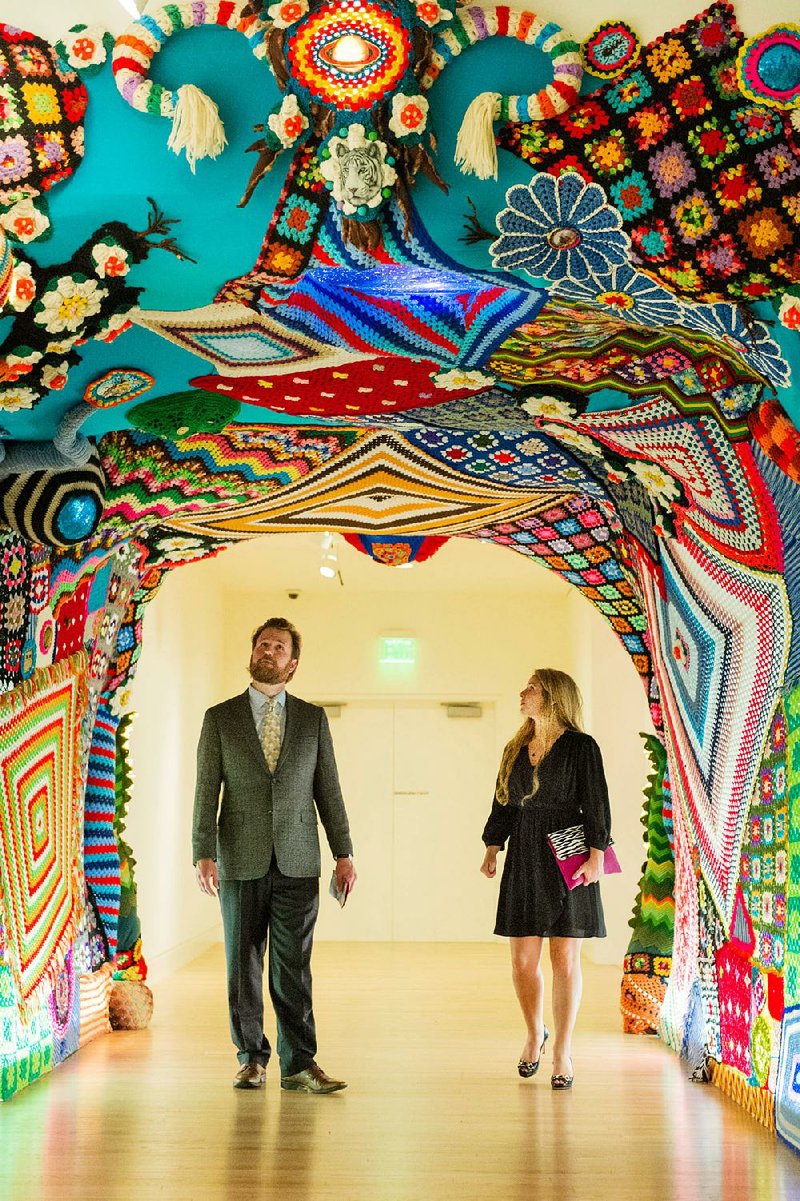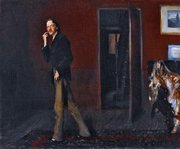Bentonville, Ark. -- Crystal Bridges Museum of American Art opened its doors five years ago on Nov. 11, 2011, after years of planning and construction. Since then, the museum has welcomed over 2.7 million people from all around the world.
-- from a press release
The American prospectus promises opportunity, not advantage, and when you grow up some distance from the coastal centers of culture in a family of average or less than average means, you do not spend your junior year abroad.
This does not mean you are less a citizen, only that you will have to work harder to achieve the kind of life and lifestyle advertised in the brochure. You will have to overcome some obstacles if you are to participate fully in the world, if you are to enjoy its wonders. Maybe you have to exhaust the resources of a relatively meager small-town library; maybe you have to exploit the patience and goodwill of a heroic teacher or two.
Maybe you will have to, as I did, discard the advice of a well-meaning high school guidance counselor who suggests something more "practical" than a liberal arts education.
When you're from a small town, you get your mind-expansion where you can. To be fair, mass media can be as much an equalizing force as a homogenizing one. You get your MTV, you feel the field's a little leveler. Now you can see Oingo Boingo. Now you can copy the styles of the cool kids. Now you can see that somewhere out there lurk other members of your tribe, people dissatisfied with the sustaining boredom of making a living.
But there is a difference between apprehending art in books and electronic media and standing in its presence. Awe doesn't travel well across platforms, and every copy is further removed from what is real. While sometimes the shock is mingled with disappointment (if you've ever tried to view the Mona Lisa at the Louvre maybe you know what I mean: The painting, protected by bulletproof Plexiglas, is much smaller than its reputation; the crowds that inevitably surround it are drawn more by its celebrity than its sublimity), more often the experience of beholding a great work is humbling. There is something about being in a room with art that expands and ennobles the spirit.
This is why Crystal Bridges Museum of American Art is so important.
The museum, famously founded by Wal-Mart heir Alice Walton, turned 5 years old Nov. 11, and in that short span has established itself as one of the world's great showcases for the best products of the human imagination. It is not insignificant that the museum is in Bentonville, not terribly far from the geographic center of the nation, firmly and defiantly in flyover country, near cow pastures and remote from any sizable urban entity. Some might draw an analogy to a mission church in a heathen wilderness, but to do so would be to underestimate the hearts and heads of common folk. For people everywhere are hungry for what engages and sustains the life of the mind. People everywhere respond to beauty and relate to the complicated and confusing array of emotions evoked by the man-made -- and useful -- stuff we call art.
People have different ideas about the usefulness of art. A lot of us consider it a luxury item, something that we might get around to if we ever manage to get on top of our accounts. Others see it as something decorative and recreational -- a "nicer thing" that makes the world more pleasant. A painting can complement a sofa, a movie might reassure us that our lives fit into some larger narrative about the essential goodness of the world. In times of trouble, the usefulness of great art can be a tough sell -- people facing economic and social insecurities tend to seek the palliative, to find solace in the comfortable (and comforting) lies of the decorative and kitschy, to choose pretty pictures that remind them of a wishful past they only believe they can remember.
...
When I first heard of Crystal Bridges, several years before it opened, I thought I knew what it would be.
I envisioned a repository of common images, a storehouse of familiar works that would hardly challenge the sensibilities of its audience. While never doubting its intentions, I believed it would ultimately be a minor insult to its imagined constituencies, the people who would drive in to see its collections. They would see a few great examples and a little middling kitsch. They would dwell in the galleries for an hour or so and walk out feeling they had done their civic duty. Maybe they would pick up a scarf in a gift shop.
I expected Norman Rockwell's Rosie the Riveter and Charles Willson Peale's portrait of George Washington. I expected the same sort of curated excellence one encounters in the Smithsonian or the National Gallery. I expected it to be a no harm, no foul situation, a solid, stolid institution specializing in certified civic taste. I expected something polite and safe.
On our first trip to Crystal Bridges, I did not expect to be transfixed by George Bellows' Excavation at Night (1908) or John Singer Sargent's remarkable Robert Louis Stevenson and His Wife (1885) or Arthur Dove's Moon and Sea II (1923). I expected Americana, not America.
I've been back to Crystal Bridges half a dozen times since then, and each time I've been impressed not only by the seriousness and strength of the exhibitions but by the people churning through the galleries -- some, yes, in overalls and cargo shorts, with cellphone cameras and dangling earbuds. You will see bored teenagers popping gum by John Baldessari's Beethoven's Trumpet (With Ear) Opus No. 132. You'll hear giggling, and the hushed reverence of someone stopped cold by Mark Rothko's No. 210/No. 211 (Orange).
When you grow up some distance from the coastal centers of culture in a family of average or less than average means, you do not always have the opportunity to be brought face-to-face with a miracle of human ingenuity -- of connecting with other imaginations across time and space. Looking at the thing itself is qualitatively different from looking at a reproduction in a magazine or catalog, and there is nothing so encouraging and nourishing to the alert mind as the certain knowledge that transcendence is possible and that the pragmatic does not necessarily exclude the poetic.
Paintings are built brushstroke by brushstroke; human hands and minds guide pens and carve away what is unnecessary. It can be done. It is not that much different from other kinds of work.
The best museums serve as means rather than ends; it is their mission to sustain the curiosity and aspiration of those who wish to push the human adventure forward as much to collect souvenirs of a wondrous past. To wander a museum is to receive an education -- a self-guided and directed course enhanced by the quality of the scholarship and authenticity of the work on display.
Crystal Bridges is not the sort of theme park it might have turned out to be; not some vulgar mountain Xanadu crammed with indiscriminately collected treasures. It is a serious and intelligent institution that respects the community that harbors it as well as those who travel to it. It is an essential destination for anyone interested in American culture and history.
When you grow up some distance from the coastal centers of culture, in a family of average or less than average means, a place like Crystal Bridges might empower you to imagine a way in which you can situate yourself in the world. It is a place where you might find models and instructors, some long dead yet still vital.
When you grow up some distance from the coastal centers of culture, in a family of average or less than average means, a place like Crystal Bridges might save your life.
Email:
pmartin@arkansasonline.com
blooddirtangels.com
Style on 11/20/2016

